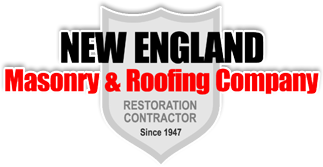Category: Commercial
The Best Roofing Maintenance Approach for Your Commercial Roof
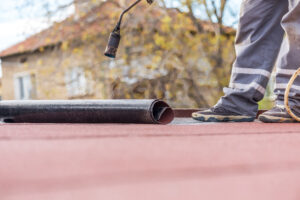
Your commercial roof has multiple functions, from protecting your building from the elements, to ensuring adequate indoor thermal comfort, regardless the season.
As a commercial property owner or manager, you are directly interested in ensuring that your roof will last as long as possible, because this way you protect your initial investment, your roof warranty and you will be able to use your insurance when you need it. For this, you must make sure to schedule roof maintenance operations on a regular basis, performed by professional commercial roofers.
The best roofing maintenance approach for your commercial roof starts with finding a reliable commercial roofer in your area. Choose a company with many years of experience in the roofing business and also with many other happy commercial clients.
Plan for the long term, by making a maintenance contract! This way, you can deal with your business without worrying about your roof, because the professional roofers will deal with it, at regular intervals, according to the schedule in the contract.
Remember!
Roof inspections, as part of the maintenance schedule, should be done only by trained flat roof specialists. They can also check the quality of the work required to repair the roof. Specialists certified in thermography are recommended for conducting infrared inspections, each time they are necessary. The roof repair must be carried out by licensed roofers like https://www.nemasonry.com that use certified materials and methods.
Is EPDM Roofing Energy-Efficient?
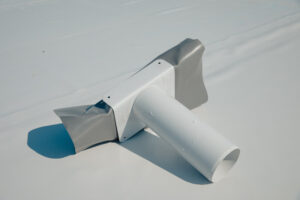
Energy efficiency in Connecticut commercial roofing is a very hot topic these days and one of the ways to achieve it is to have a good roof to protect your building, ensuring adequate insulation and ventilation.
A big amount of the heat loss happens through the roof. At the same time, certain roofs absorb the solar heat and transfer it indoors, which will definitely make those air conditioners run like crazy, in the summer.
These issues can be avoided with an adequate roof.
EPDM roofing is currently the most durable and popular solution used for commercial buildings – and for good reasons! Besides its great protective properties, this type of membrane meets the increasing concerns for energy efficiency and eco-friendliness.
EPDM roofing is, first and foremost, very longwearing and durable, requiring very little maintenance and repair costs. The fact that it must not be replaced every 15 years is a huge advantage in terms of sustainability. Its application process is eco-friendly, considering that it does not involve using open flame, thus reducing the carbon emissions into the atmosphere. EPDM membrane is also recyclable, at the end of its life span.
The main concern is related to its color, which is dark. This means that EPDM roofing absorbs the heat, which can be an advantage in colder areas, but also a disadvantage in warmer climates and during the summer. However, this problem can be solved with proper roof insulation and ventilation, as well as by the application of a white liquid coating on the roof, which will modify its reflective properties.
The Best Materials Recommended by Commercial Roofers
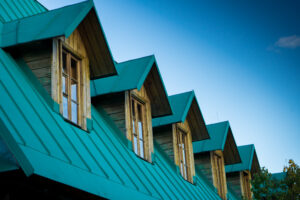
Commercial roofing may not be as complex as residential roofing, but it still comes in different types. The materials are typically chosen according to the commercial buildings’ needs as well as the owner’s budget.
Commercial roofers are your best source of information in choosing the best materials. Nowadays, they frequently recommend thermoset (EPDM) membrane and thermoplastic (PVC & TPO) membrane, taking into account factors like the durability of the roof, local climate and energy efficiency.
Considering that the type of roof that you install on your commercial property plays a big role in the building’s overall health, you must choose carefully, keeping in mind the recommendations of the professional roofers.
Thermoset (EPDM) Roof Membrane
This commercial roofing CT option is currently the most durable. It performs great in any climate, provides great resistance to sunlight and emissions, it is highly flexible and easy to install. An EPDM roof can last even 50 years, being also recyclable, at the end of its life span. Maintenance requirements are rather low, so EPDM roofing is very convenient.
Thermoplastic (PVC & TPO) Roof Membrane
TPO and PVC roofing systems are also great choices, being resistant to adverse conditions (solar exposure, chemicals, bacterial growth etc.). Although they are not as resistant as EPDM roofing, they have an advantage that EPDM membranes do not have: they are reflective, which makes them more energy-efficient during the summer, when they contribute to reducing the building cooling costs.
Choosing the Best “Green” Solutions for Connecticut Commercial Roofing

In recent years, there is an increasing tendency of architects and building owners to opt for sustainable materials, which is a responsible thing to do, considering the increasing concerns about the environment, global warming and excessive urbanization.
In this regard, one of the best roofing choices for Connecticut commercial buildings is green roofing.
What is a green roof?
A green roof does not necessarily refer to its color, but also to the materials from which it is made.
When we talk about green roofing, we may refer indeed to those roofs covered with vegetation, similar to gardens. Lately, there is a trend, in big cities, to transform flat roofs into vegetal roofs, because it is a very nice way to bring more nature into the the urban landscape. Additionally, these roofs offer really great protection and energy-efficiency.
Besides the vegetal roof, which is literally green, there are other “green” solutions, that is, environmentally-friendly, which have characteristics that make them sustainable.
For example, the TPO membrane is reflective, given that it is manufactured in white or light grey. Thus, it does not absorb the heat of the sun in summer, transferring it indoors, so the air conditioners will work less, and the energy consumption will be reduced. That`s sustainability and eco-friendliness too! Talk with https://www.nemasonry.com/new-england-roofing for all your commercial roofing options.
TPO vs. EPDM Roofing for Commercial Applications in New England
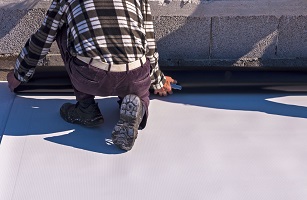
Choosing the right waterproofing system for a flat roof is very important. The choice is usually made according to the existing support and the needs of the beneficiary. TPO and EPDM single-ply membranes are currently among the most popular commercial roofing CT solutions.
TPO membrane can be installed quickly and easily by a professional roofer, even without removing the old layer of bituminous membrane. It is an elastic membrane that can be easily stretched on large surfaces, regardless of their irregularities.
TPO membrane is installed by hot air welded seams, which ensures a superior strength to any adhesive. In general, you will not need major repairs for at least 30 years from the moment of having a TPO membrane installed on your roof, if the work was done with a sense of responsibility, by a professional roofer.
EPDM waterproofing systems are designed for circulating terraces, non-circulating terraces, flat or low-slope roofs of commercial buildings and industrial halls, hydrotechnical works and can also be used to support vegetal roofs and/or extensive photovoltaic systems. Independent studies on the strength of EPDM roof membranes indicate a service life of more than 50 years, which makes this product the top range of waterproofing membranes and one of the most environmentally-friendly systems currently on the market.
A major difference between the two types of single-ply membranes consists in their potential to influence the energy-efficiency of a building. EPDM membranes are dark, so they will absorb heat in the summer, forcing the HVAC systems to work more for cooling the indoor environment. On the other hand, TPO membranes are light colored, so they reflect sunlight, allowing air conditioners to work more efficiently.
